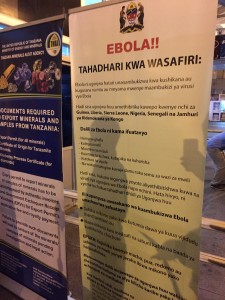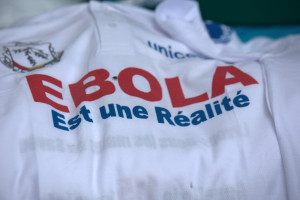The message strategy is one of the most important elements of a communication strategy. It drives the rest of the program and ensures synergy, consistency and coordination of objectives and messages across all stakeholders and partners.
A message strategy is designed for each primary and influencing audience, and includes (a) communication objectives, (b) positioning and (c) key messages.
Communication objectives are measurable statements that clearly and concisely state what the target audience should know or think, what they should believe or feel, and what they should do. It should also include the timeframe required for the change. “SMART” communication objectives, as mentioned earlier are Specific, Measurable, Attainable, Relevant and Time-bound. The available evidence on the factors that drive or inhibit the primary and influencing audiences should determine the communication objectives. It is also critical to make the objectives measurable and related to indicators listed in the M&E plan. These measurable objectives help to determine whether the goal of the program was achieved.
Positioning is the heart of the SBCC strategy. It identifies the most compelling and unique benefit that the behavior offers the target audience. Positioning is often the emotional “hook” upon which the SBCC strategy hinges. It presents the desired behavior in a way that is both persuasive and appealing to the audience, and shapes the development of messages, which helps programs determine what communication channels to use. Positioning ensures that messages have a consistent voice and that all planned activities reinforce each other for a cumulative effect.
Key Messages outline the core information to convey to audiences consistently and across all activities. Messages cut across all channels and must reinforce each other across these channels. Effectiveness increases when all SBCC approaches (e.g., community mobilization and mass media) communicate harmonized key messages expressed in different ways and build on each other. Well-designed messages are specific to the audience and clearly reflect both positioning and a specific element that drives or inhibits behavior (a behavioral driver). Key messages clearly describe the desired behavior, which must be “doable” for the audience.
One of the most efficient methods of developing consistent key messages is to use a message map. A message map is the basis for all communications relating to an organization, a specific project or an initiative. As a visual aid, it allows the team to prepare and organize answers to the questions they are most likely to hear from the news media and from the public during a crisis.
Developing and using message maps achieves several important risk communication goals. They:
- Identify stakeholders early in the communication process
- Anticipate and address stakeholder questions and concerns before they are raised
- Organize thinking and preparation of prepared messages in response to anticipated stakeholder questions and concerns
- Develop key messages and supporting information within a clear, concise, transparent and accessible framework
- Promote open dialogue about messages, both inside and outside of the SM committee
- Provide user-friendly guidance and direction to spokespersons
- Ensure that there is a central repository of consistent messages
- Encourage all stakeholders and partners to speak with one voice
For Ebola, it is critical that messages:
Instill confidence
Are created considering communication channels
Are not discriminatory
Do not instill fear
Focus on preventive and treatment seeking actions that are simple and actionable to minimize potential risks
Are in compliance with national policy and legal measures, and services offered to affected and quarantined communities, including food aid, water provision and safe burials
Focus not only on local media coverage, but also on international media outlets
Be based on rapid situational analysis and continuous monitoring of the crisis
Allow people to evaluate risks and make informed choices
Additional Resources
For existing key messages on Ebola, see WHO/ UNICEF Social Mobilization: Key Messages, Ebola Guidance Package, the Ebola Message Guidance Package (Liberia); UNICEF’s 20 Lessons Learned to Inform C4D Responses to Ebola Outbreaks, West Africa, 2014 and messaging guides for SMS messaging for Ebola, on the Ebola Communication Network.
For additional guidance message mapping, see Message Mapping, Risk and Crisis Communication.
Illustrative Example: Message Strategy
View an example message strategy for an Ebola communications campaign.


